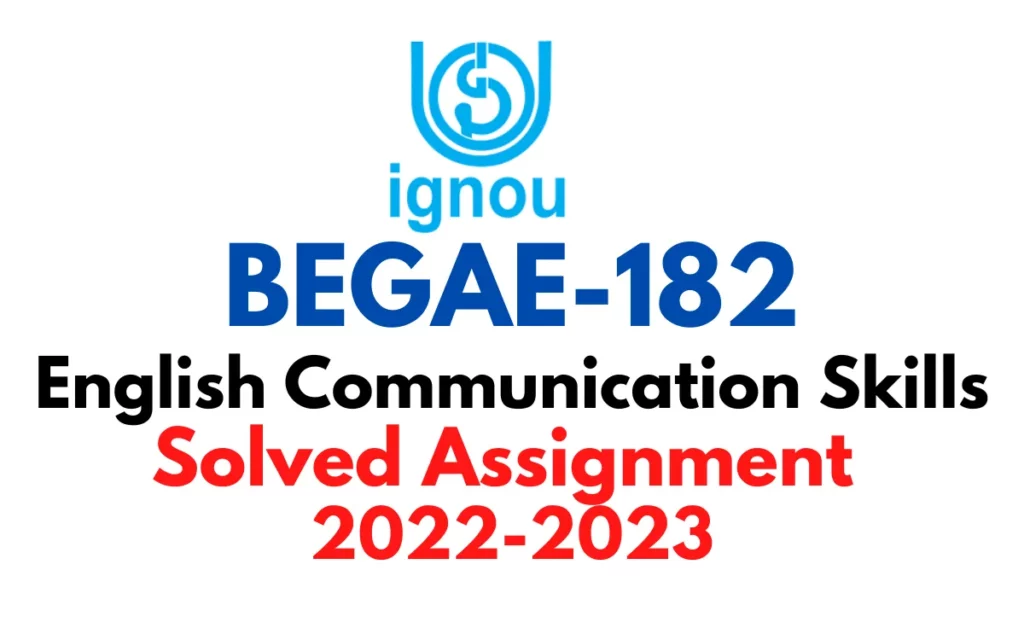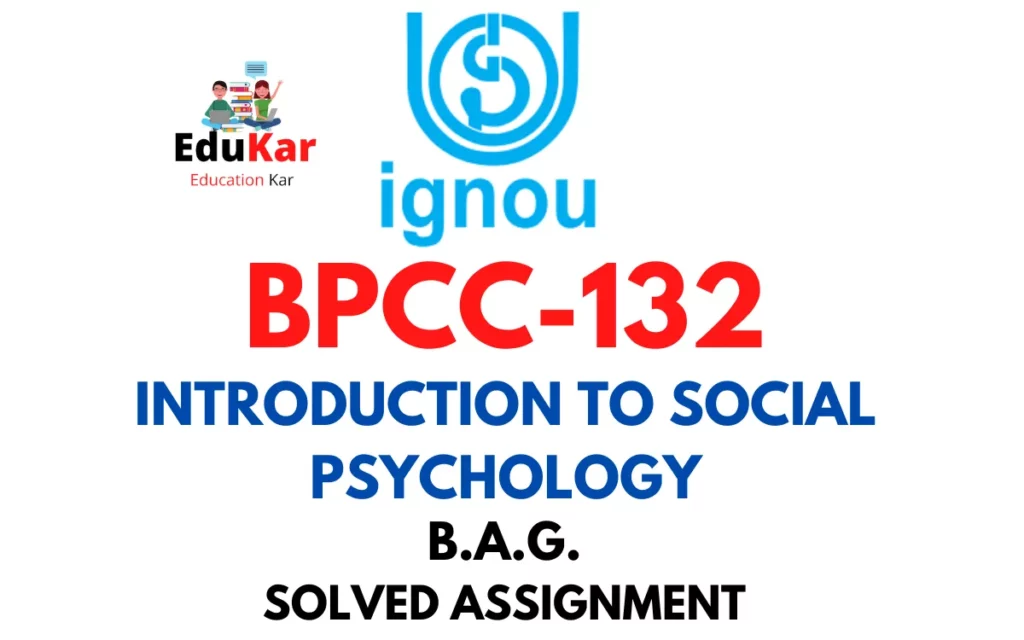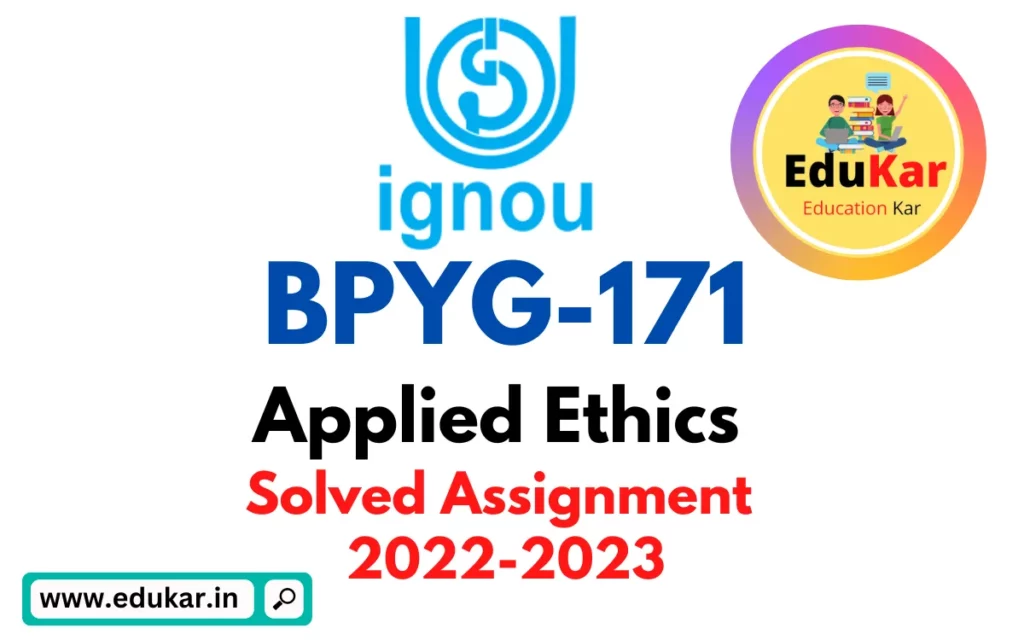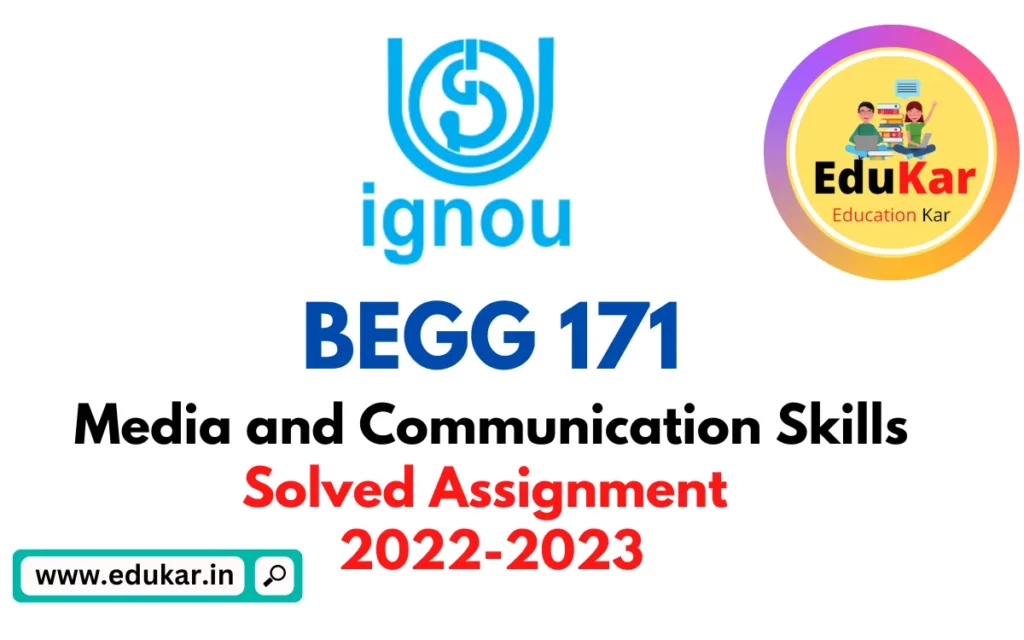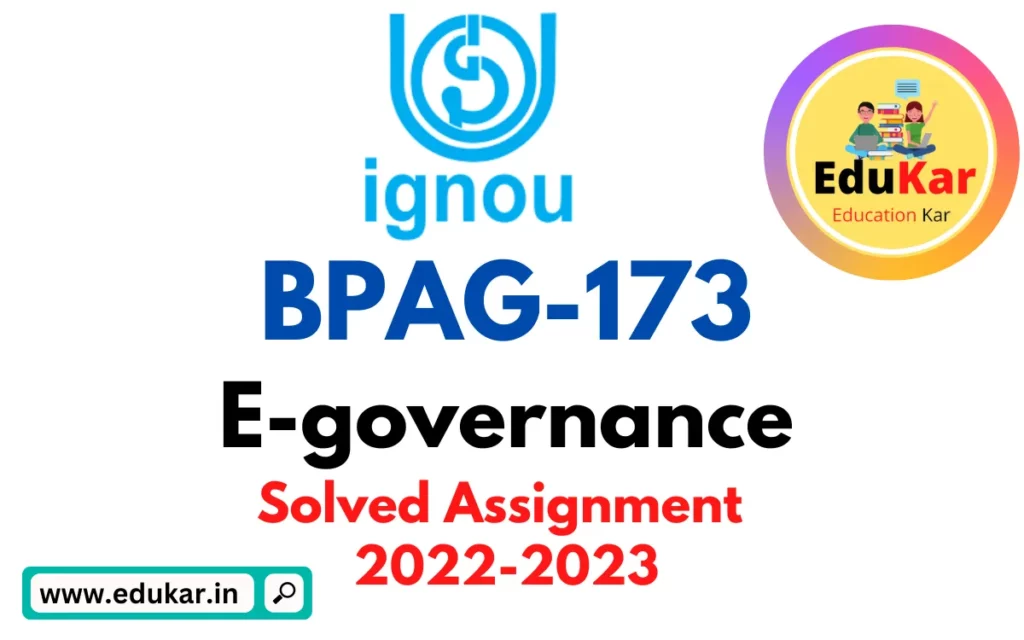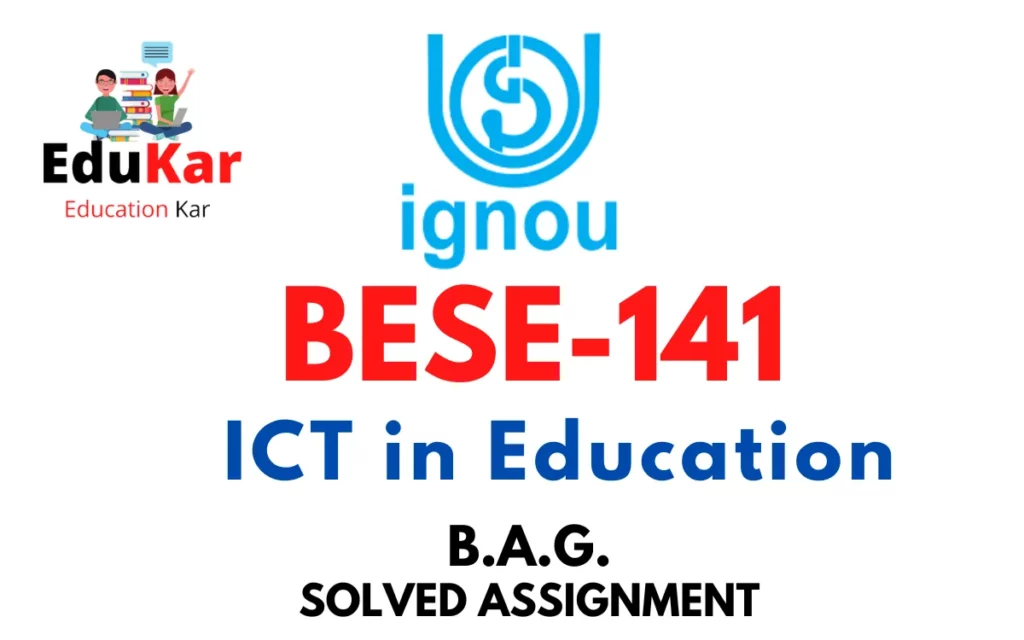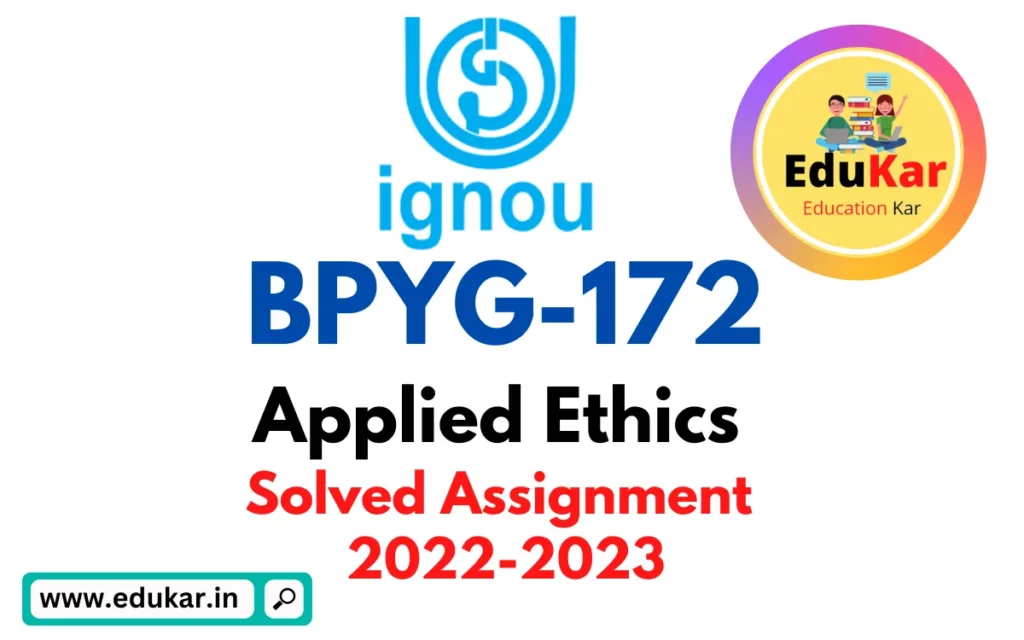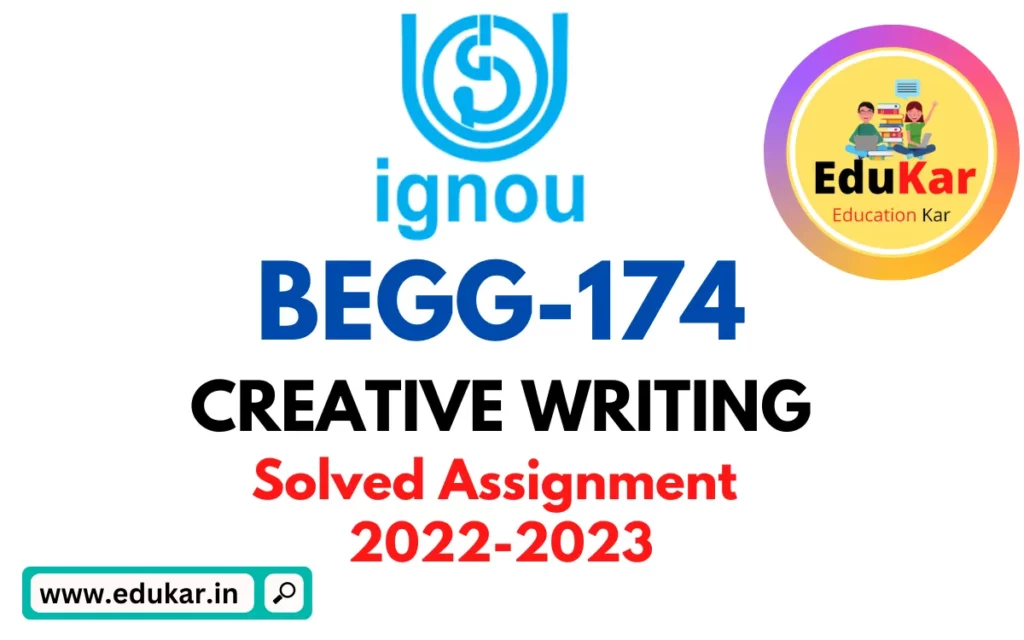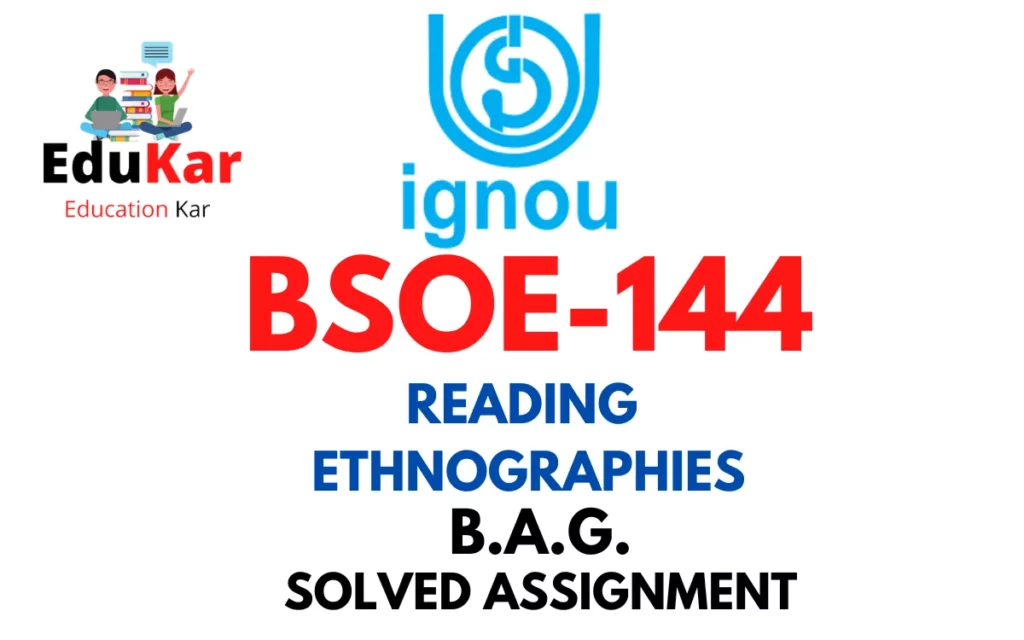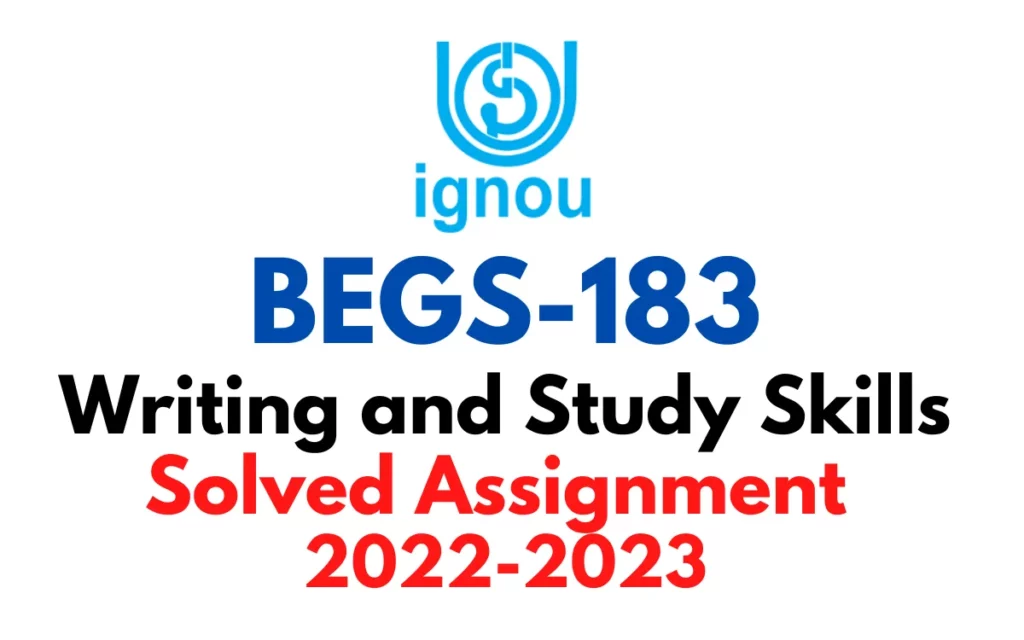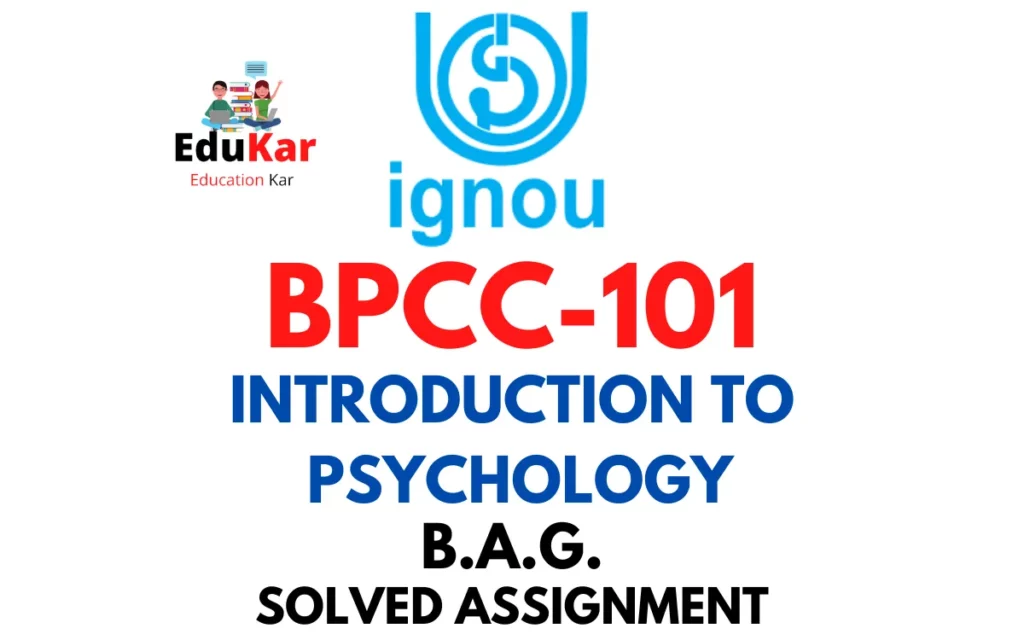Contents
- 1 Section A
- 2 Write short notes in about 100 words each:
- 3 1. (i) Digital Texts
- 4 (ii) Young Adult Fiction
- 5 (iii) Hard Boiled Novels
- 6 (iv) Digna Pattern
- 7 Section B
- 8 Answer the following in about 350 words each:
- 9 1.Try and locate Young Adult Literature within Popular Literature.
- 10 2. Comment on the relationship between the Lion and the Unicorn in Through the Looking Glass.
- 11 3. Analyse Funny Boy as a bildungsroman.
- 12 4. Examine the role and significance of the narrative voice in “The Ones Who Walk Away From Omelas.”

| Title | BEGC-106: IGNOU BAG Solved Assignment 2022-2023 |
| University | IGNOU |
| Degree | Bachelor Degree Programme |
| Course Code | BEGC-106 |
| Course Name | Popular Literature |
| Programme Name | Bachelor of Arts (General) |
| Programme Code | BAG |
| Total Marks | 100 |
| Year | 2022-2023 |
| Language | English |
| Last Date for Submission of Assignment: | For June Examination: 31st April For December Examination: 30th September |
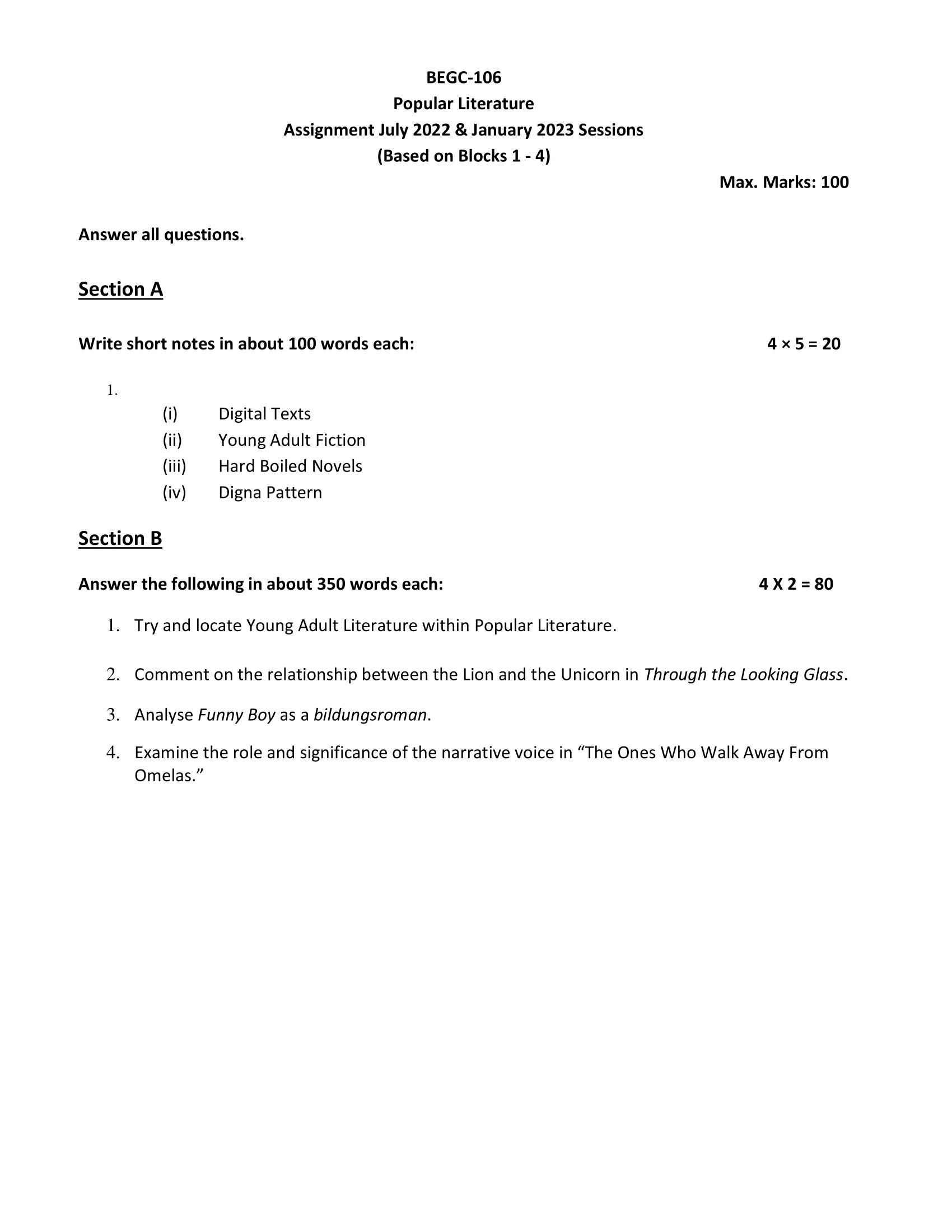
Section A
Write short notes in about 100 words each:
1. (i) Digital Texts
Ans: Digital texts refer to any text-based information that has been converted into a digital format, such as eBooks, online articles, and digital documents. These types of texts can be easily accessed, shared, and manipulated using electronic devices such as computers, tablets, and smartphones. Digital texts have become increasingly popular in recent years due to their ease of use and accessibility.
(ii) Young Adult Fiction
Ans: Young adult fiction (often abbreviated as YA fiction) is a literary genre that is targeted towards readers between the ages of 12 and 18, although it is also enjoyed by many adult readers. YA fiction often deals with issues that are particularly relevant to young people, such as coming of age, identity, relationships, and social issues. The genre encompasses a wide range of sub-genres, including contemporary, fantasy, science fiction, romance, and mystery, among others. Some of the most popular YA authors include J.K. Rowling, John Green, Sarah Dessen, Suzanne Collins, and Angie Thomas, among many others. YA fiction has become increasingly popular in recent years, and has been credited with helping to encourage literacy and a love of reading among young people.
(iii) Hard Boiled Novels
Ans: Hard boiled novels are a subgenre of crime fiction that originated in the United States in the 1920s and 1930s. These novels typically feature tough, cynical, and morally ambiguous detectives, who are often operating outside of the law. Hard boiled novels are characterized by a fast-paced, gritty writing style, and are often set in urban environments. They frequently deal with themes of violence, corruption, and betrayal, and often feature hard-edged dialogue and graphic depictions of sex and violence. Some of the most famous hard boiled novelists include Dashiell Hammett, Raymond Chandler, and James M. Cain. Hard boiled fiction has had a significant influence on popular culture, including film noir, neo-noir, and detective fiction more broadly.
(iv) Digna Pattern
Ans: Do It By Yourself.
Section B
Answer the following in about 350 words each:
1.Try and locate Young Adult Literature within Popular Literature.
Ans: Young Adult Literature (YA) is a genre of literature that is primarily written for readers aged between 12 to 18 years. It is often considered a sub-genre of popular literature, which is a category of literature that is widely read and enjoyed by a large audience. Popular literature encompasses various genres such as romance, mystery, thriller, fantasy, science fiction, and more. In recent years, the popularity of YA literature has increased significantly, and it has emerged as a significant sub-genre of popular literature.
The popularity of YA literature can be attributed to the fact that it addresses the issues and challenges faced by young adults, such as identity, relationships, mental health, social issues, and more. Moreover, it is written in a language that is accessible and relatable to young adults, making it easier for them to engage with the content. This relatability and accessibility have helped to expand the readership of YA literature beyond the intended age group, making it a significant part of popular literature.
Furthermore, YA literature is also popularized by its adaptation into various forms of media, such as movies, TV series, and video games. The success of these adaptations has helped to increase the visibility and popularity of YA literature, making it a part of popular culture.
Overall, Young Adult Literature is a sub-genre of popular literature that caters to a specific age group, but it has managed to expand its readership beyond that age group due to its relatability, accessibility, and popularity in various forms of media. Its impact on popular culture and the literary landscape cannot be denied, and it will continue to shape the way we consume and engage with literature in the future.
2. Comment on the relationship between the Lion and the Unicorn in Through the Looking Glass.
Ans: In Lewis Carroll’s novel “Through the Looking Glass,” the Lion and the Unicorn are two characters who are initially portrayed as enemies, but who eventually form a close relationship that is both humorous and touching.
When we first encounter the Lion and the Unicorn in the novel, they are engaged in a comical battle for the crown. The two characters are depicted as proud, haughty, and self-important, with each believing that they are more entitled to the crown than the other. Their fight is not serious, but rather a farcical exchange that highlights their silly personalities.
However, as the story progresses, we see a shift in the relationship between the Lion and the Unicorn. When Alice becomes lost in the forest and meets the two characters again, they have set aside their differences and are working together to find and help her. The Lion and the Unicorn’s interactions become more cooperative, and they begin to work together to overcome the obstacles they face, such as the Jabberwocky.
The relationship between the Lion and the Unicorn is also characterized by their mutual respect for each other’s unique strengths and weaknesses. For instance, the Lion is praised for his bravery and strength, while the Unicorn is admired for his speed and agility. This mutual admiration and respect for each other helps them to work together effectively as a team.
Towards the end of the novel, the Lion and the Unicorn are depicted as genuinely caring for each other. When the Unicorn is injured in battle, the Lion is quick to come to his aid and shows genuine concern for his well-being. This moment of compassion and care is particularly touching, as it reveals that beneath their comical exteriors, the Lion and the Unicorn are capable of deep and genuine emotional connections.
3. Analyse Funny Boy as a bildungsroman.
Ans: Shyam Selvadurai’s novel, “Funny Boy,” is a coming-of-age story that tells the story of a young boy named Arjie growing up in Sri Lanka during the 1970s and 80s. The novel can be considered a Bildungsroman, a type of novel that focuses on the protagonist’s growth and development from childhood to adulthood. In this essay, we will analyze “Funny Boy” as a Bildungsroman and explore the ways in which Arjie’s journey to self-discovery is portrayed.
One of the key characteristics of a Bildungsroman is that the protagonist undergoes a process of self-discovery and transformation as they navigate the challenges and obstacles of growing up. In “Funny Boy,” Arjie’s journey towards self-discovery is a central theme of the novel. At the beginning of the novel, Arjie is a shy and sensitive child who feels out of place in the conservative and patriarchal society in which he lives. As he grows up, Arjie starts to explore his identity and his sexuality, and this exploration ultimately leads him to a deeper understanding of himself and his place in the world.
Arjie’s journey towards self-discovery is depicted through a series of episodes and encounters that challenge his worldview and force him to question his beliefs and values. For instance, Arjie’s experiences with his family, friends, and society at large push him to confront his own desires and aspirations. The conflicts that arise between Arjie and his family over his identity and his sexuality, as well as his attempts to find acceptance and love, force him to re-evaluate his beliefs and values, and to find his own path.
Another key aspect of the Bildungsroman is the theme of self-realization. In “Funny Boy,” Arjie’s journey to self-discovery is a process of coming to terms with his own identity and finding the courage to be true to himself. Through his encounters with other characters, Arjie begins to understand that he is not alone in his struggle, and that others share his pain and his fears. This realization helps him to find the strength to stand up for himself, to assert his identity, and to live his life on his own terms.
Finally, a Bildungsroman often concludes with the protagonist achieving a level of self-realization and maturity that enables them to navigate the challenges of adulthood with confidence and wisdom. In “Funny Boy,” Arjie’s journey towards self-discovery culminates in his decision to leave Sri Lanka and pursue his dreams. This decision is a sign of his growing maturity and his willingness to take responsibility for his own life.
4. Examine the role and significance of the narrative voice in “The Ones Who Walk Away From Omelas.”
Ans: In Ursula K. Le Guin’s “The Ones Who Walk Away from Omelas,” the narrative voice plays a crucial role in creating the tone, atmosphere, and message of the story. The narrative voice is both omniscient and detached, providing an objective view of the society of Omelas, and the moral dilemma that lies at the heart of the story. In this essay, we will examine the role and significance of the narrative voice in “The Ones Who Walk Away from Omelas.”
One of the key functions of the narrative voice is to create a sense of detachment from the events of the story. The narrator provides a detailed and objective description of the city of Omelas, its people, and their way of life. The narrator does not take sides or express any judgment about the society or its values, but rather presents a clear and factual account of the situation. This detachment creates a sense of distance between the reader and the events of the story, and allows the reader to form their own opinions and judgments.
At the same time, the narrative voice is also used to create a sense of unease and discomfort in the reader. The narrator’s objective description of Omelas is contrasted with the moral dilemma that lies at the heart of the story. The fact that the happiness and prosperity of the society is built on the suffering of a single child creates a sense of moral conflict that is difficult to resolve. The narrative voice is instrumental in creating this tension and ambiguity, as it presents the reader with a clear and factual description of the society, while also highlighting the ethical implications of the situation.
The narrative voice is also significant in the way it presents the story’s central message. The narrator does not express any explicit moral judgment about the society of Omelas, but rather allows the reader to come to their own conclusions. The final sentence of the story, in which the narrator describes the people who choose to walk away from Omelas, is a powerful example of this approach. The narrator does not tell the reader what to think or feel about the situation, but rather presents them with a choice: to accept the society’s values and remain complicit in the suffering of the child, or to reject those values and walk away.
How to Download BEGC-106 Solved Assignment?
You can download it from the www.edukar.in, they have a big database for all the IGNOU solved assignments.
Is the BEGC-106 Solved Assignment Free?
Yes this is absolutely free to download the solved assignment from www.edukar.in
What is the last submission date for BEGC-106 Solved Assignment?
For June Examination: 31st April, For December Examination: 30th October


